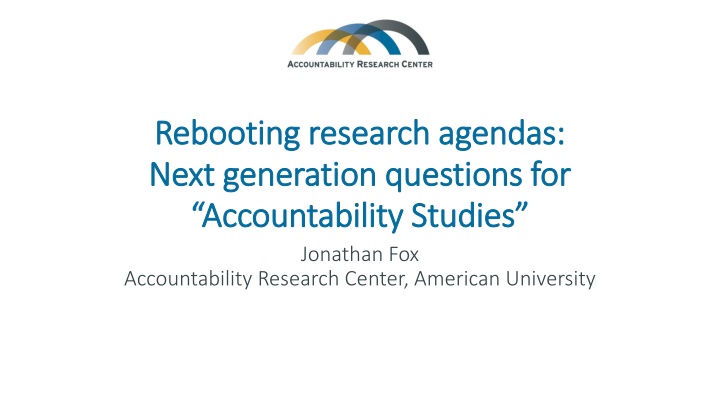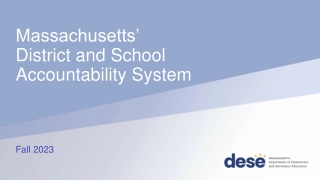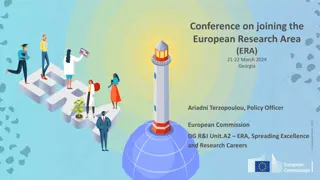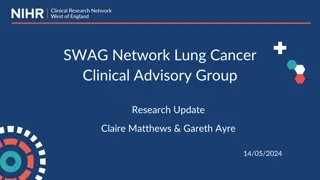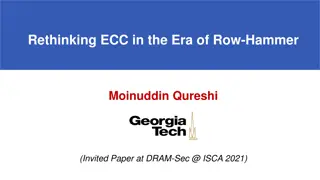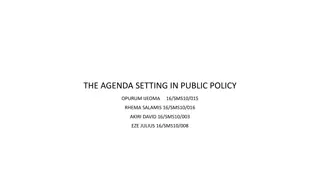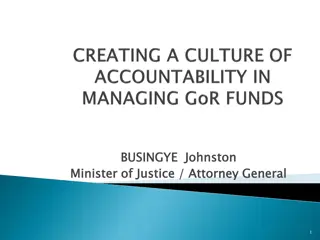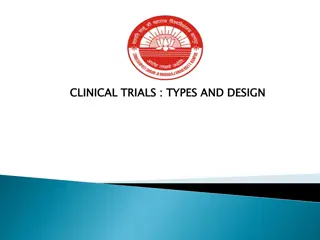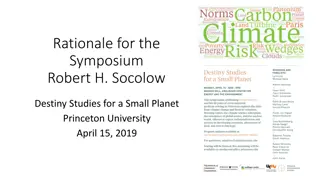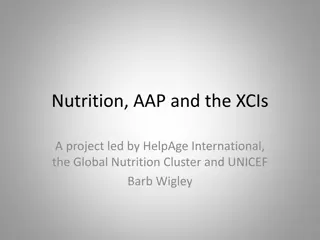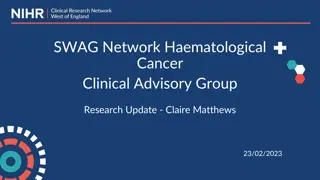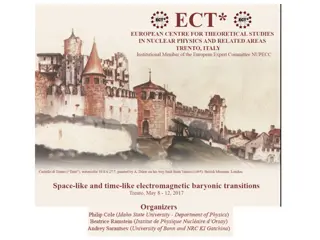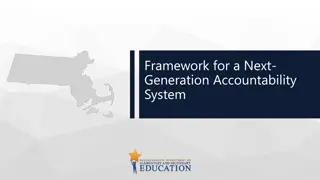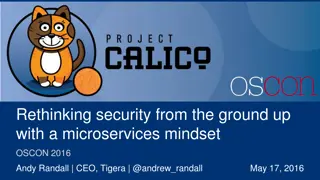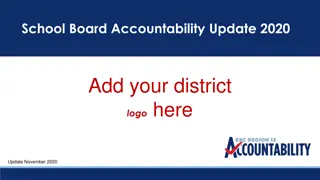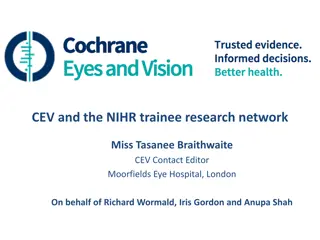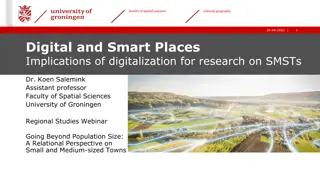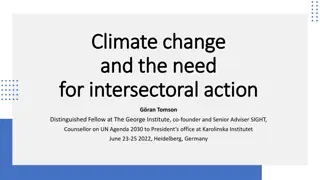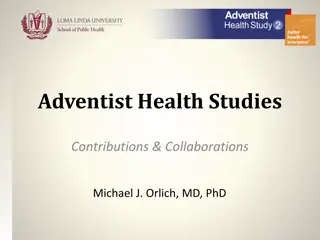Rethinking Research Agendas for Accountability Studies
Refreshing research agendas in accountability studies is crucial due to the ongoing challenges in explaining and achieving accountable governance. The evolution of classic theories, the importance of foundational concepts, and the limitations in the current accountability literature necessitate a reboot in research priorities to keep up with the advancements in practice and address critical gaps in understanding accountability dynamics.
Download Presentation

Please find below an Image/Link to download the presentation.
The content on the website is provided AS IS for your information and personal use only. It may not be sold, licensed, or shared on other websites without obtaining consent from the author.If you encounter any issues during the download, it is possible that the publisher has removed the file from their server.
You are allowed to download the files provided on this website for personal or commercial use, subject to the condition that they are used lawfully. All files are the property of their respective owners.
The content on the website is provided AS IS for your information and personal use only. It may not be sold, licensed, or shared on other websites without obtaining consent from the author.
E N D
Presentation Transcript
Rebooting research agendas: Rebooting research agendas: Next generation questions for Next generation questions for Accountability Studies Accountability Studies Jonathan Fox Accountability Research Center, American University
Classic theories of change for accountability Classic theories of change for accountability Classic causal chain: T > P > A Underlying ideas go back a century: Sunlight is said to be the best of disinfectants; electric light the most efficient policeman. (Brandeis, 1913) This common-sense sentence implies two different theories of change one reactive, the other preventative
Why reboot research agendas? Why reboot research agendas? Social science still has difficulty explaining accountability Electoral democracy is not sufficient for accountable governance Theories about transitions to accountable governance today are where transitions to democracy were in the early 1980s Conventional wisdom about evidence-based policy-making has difficult explaining actual policy-making Mexico is a paradigm case of the disconnect between transparency and accountability
Foundational concepts are still key Foundational concepts are still key Vertical & horizontal accountability (O Donnell) Diagonal/transversal accountability state-society hybrids (Isunza) Accountability = Answerability + enforcement (Schedler) Social/societal accountability (vs political) (Peruzzoti & Smulovitz) State-society interfaces (Long; Gurza & Isunza) Invited/claimed spaces (Cornwall) Accountability politics: the arena of conflict over whether and how those in power are held publicly responsible for their decisions (Fox)
Limitations in the accountability literature Limitations in the accountability literature Classic concepts are strong on description, but explanatory frameworks lag Practice is ahead of research Applied research is ahead of conceptual and analytical work Silos slow synergy (sectoral, disciplinary) Limited menu of methodologies crowds out big questions
Accountability 2.0: Criteria for framing questions Accountability 2.0: Criteria for framing questions Intellectually significant Draw on classic social science concepts and debates Analytically tight yet empirically open-ended Informed by dialogue with action strategists Relevant to change strategies
Accountability 2.0 questions fall into three thematic areas Accountability 2.0 questions fall into three thematic areas Citizen action for accountability State-society synergy Rethinking the power of information
Citizen action for accountability: Citizen action for accountability: Elections, constituencies, scale, strategies Elections, constituencies, scale, strategies
Do elections really serve as accountability mechanisms? Do elections really serve as accountability mechanisms? What drives political accountability? Conventional wisdom in political science often assumes that elections are accountability mechanisms This assumes that voter choices are primarily driven by retrospective motivations Yet voters are also motivated by prospective choices which could be in tension with the retrospective assumption What does the evidence say?
How to broaden social/civic constituencies for accountability? How to broaden social/civic constituencies for accountability? Broadening has two dimensions, territorial and social. How can pro-accountability initiatives grounded in collective action spread horizontally within districts, provinces and countries? while becoming more inclusive of directly affected social and civic actors?
How to take scale into account? Four approaches How to take scale into account? Four approaches Scaling up:Doing more of X, reaching more people, but may be watered down Diffusion: Innovations travel horizontally across state and society, by promotion or emulation, but may be transformed in the process Scale shift: Change strategies adapt by shifting levels of action to find new targets Vertical integration: Monitoring & advocacy builds on scale shift (when it s multi-level) & diffusion (when it broadens social base with social inclusion)
How are CSOs held accountable? How are CSOs held accountable? First, distinguish between membership organizations and NGOs Downwards accountability within membership orgs? Why is internal democracy so hard? Upwards accountability for NGOs (to boards) Recall classic sociological problem of the Iron Law of Oligarchy How do non-electoral accountability mechanisms work for CSOs? Exit, voice and loyalty (e.g., coops) Reputational risk
What can vertical integration do? What can vertical integration do? Can the coordination of independent policy monitoring and advocacy across multiple levels of government bolster accountability impacts? Source: J. Fox and J. Aceron, Doing Accountability Differently, U4 Issue Paper, 2016
How does transitional justice weigh tradeoffs? How does transitional justice weigh tradeoffs? Does addressing past abuses risk making future abuses more likely, by provoking backlash? Reactive approaches impose consequences on guilty Preventative approaches seek to minimize future abuses When are there tradeoffs vs synergy between these two approaches? Truth with justice or truth vs justice?
Accountability institutions: Who guards the guardians? Accountability institutions: Who guards the guardians? Question posed by the Roman poet Juvenal: ?Quis custodiet ipsos custodes? (see also Plato, Heinlein, Star Trek, Batman, Dr. Suess, Homer Simpson) Institutional autonomy is two-edged sword necessary yet risky When accountability institutions are ineffective, is the cause weakness or capture? When public oversight institutions are strong and autonomous, they can abuse that power (e.g., Colombian Procurador s removal of elected officials, or Sergio Moro in Brazil).
State State- -society synergy: society synergy: Insider/outsider, voice and teeth Insider/outsider, voice and teeth
Understanding synergy: Sandwich strategies Understanding synergy: Sandwich strategies Snapshot of change dynamic Low accountability traps are perpetuated by weak pro- accountability actors in both state and society. Can coalitions bridging the state- society divide turn vicious circles of disempowerment into virtuous circles of mutual empowerment?
How can voice and teeth reinforce each other? How can voice and teeth reinforce each other? How does state-society synergy work over time? What processes can drive increased state responsiveness (teeth) to citizen-led accountability initiatives (voice)? What makes public institutions that are designed to listen to citizens effective? For ex. Ombuds agencies, human rights commissions, grievance redress mechanisms, civilian police review boards Yet they may value autonomy over collaboration (e.g., ASF)
Rethinking the power of information: Rethinking the power of information: Targeted transparency, truth Targeted transparency, truth- -tellers culture & disinformation culture & disinformation tellers
Can Can targeted transparency targeted transparency motivate & inform action? motivate & inform action? Targeted information (Fung et al 2007): Proactive disclosure Info perceived as accessible, relevant and actionable for transparency Targeted transparency designed to influence action cycles Classic case: Toxic Release Inventory Yet concept easily watered down ( transparencia focalizada ) Puzzling lack of uptake of the concept What kinds of targeted transparency strategies are effective?
How do transparency action cycles work? How do transparency action cycles work? From Full Disclosure: The Perils and Promise of Transparency by Archon Fung, Mary Graham, and David Weil (2007) p.54
How to legitimate and protect truth How to legitimate and protect truth- -tellers? tellers? Truth-tellers like whistleblowers - are public or private sector insiders who release information about institutional failures They inform accountability efforts by providing the undeniable evidence needed to identify specific causes and perpetrators of abuse (smoking guns) They often pay a high personal price for their disclosures How can their institutional betrayal be reframed as civic duty? How can truth-tellers be supported more effectively?
How is accountability understood in popular culture? How is accountability understood in popular culture? As a trans-ideological concept, how is the idea understood, communicated, contested and appropriated? How to disentangle upwards vs downwards accountability? Who is the first mover? ( corruption as a collective action problem ) If enforcement actions are selective, how to avoid delegitimizing perception of political bias? Are norms a cause or a consequence of impunity? How can accountability strategies engage effectively with mass popular culture, in order to both name and shame and name and fame pro- accountability actors?
How can information compete with disinformation? How can information compete with disinformation? Problem: the big lie often works If information is power, does disinformation have more? How do the drivers of the diffusion of information vs disinformation differ? Context: How to disentangle norms, beliefs and opinions? How does the concept of accountability apply to hold private digital platforms that host others hate and lies? How to address the tension between regulation of speech and freedom of expression?
Cross Cross- -cutting methodological challenges cutting methodological challenges Uncertain time horizons Accountability impacts are unlikely to follow linear patterns (J-curve?). How can analytical frameworks take discontinuous change dynamics into account? What evidence counts? What kinds of evidence is needed to inform action? ( Precautionary principle ) Tension between field experiments and Sherlock Holmes approach to evidence Positive outliers Conventional impact evaluation approaches invisibilize variation How to identify factors that explain exceptions to dominant patterns?
Thank you! Thank you! Jonathan Fox School of International Service American University fox@american.edu www.jonathan-fox.org www.accountabilityresearch.org
